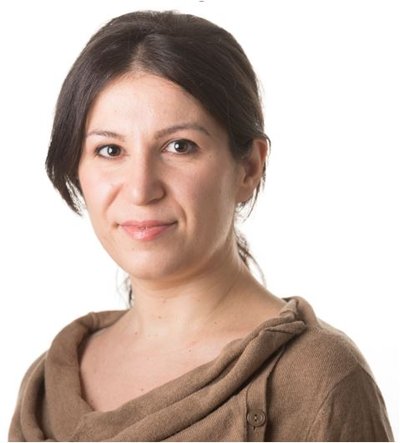Digital-to-time converters for spur correction in digital frequency systhesis
Due to the COVID-19 crisis measures the PhD defence of Claudia Palattella will take place online without the presence of an audience.
The PhD defence can be followed by a live stream.
Claudia Palattella is a PhD student in the research group Integrated Circuit Design (ICD). Her supervisor is prof.dr.ir. B. Nauta from the Faculty of Electrical Engineering, Mathematics and Computer Science (EEMCS).
 The demand for wireless communication, mobile computing and multifunctional portable electronics has driven System-on-Chip (SoC) solutions, where many functional blocks running at difference clock frequencies coexist on the same chip. This requires an on-chip clock source that must be able to generate a wide range of frequencies in a flexible way.
The demand for wireless communication, mobile computing and multifunctional portable electronics has driven System-on-Chip (SoC) solutions, where many functional blocks running at difference clock frequencies coexist on the same chip. This requires an on-chip clock source that must be able to generate a wide range of frequencies in a flexible way.
The concept of Pulse-Output Digital-to-Frequency Converter (DFC) has been the starting point for the research developed in this thesis. A key limitation of this architecture is deterministic jitter, due to periodic phase errors produced by its digital core. The research described in this thesis focuses on reducing the deterministic jitter exploiting Digital-to-Time Converters (DTCs). The design of a new fully-differential DTC, suitable for GHz operating frequencies, is developed. To characterize the DTC in terms of resolution and linearity, we propose a method to measure its delay steps with unprecedented time resolution, as low as femto-seconds, with common lab equipment. The method exploits digital phase modulation to produce spurs related to the size of the DTC delay-steps. To correct the deterministic jitter of a Pulse-Output DFC, we propose in this thesis a spur correction with the aforementioned developed DTC.
The system analysis shows that a 11-bit DTC with a few LSB INL is capable to push down the sub-harmonic spurs of the Pulse-Output DFC to -60 dBc. A mathematical model is derived that (1) predicts the strength of all the sub-harmonic spurs and (2) relates the maximum spur to the DTC Integral Non-Linearity (INL) in a simple, closed-form expression. This allows the designer to derive DTC INL requirements given a Spurious-Free Dynamic Range (SFDR) target. A fully-integrated prototype of a Pulse-Output DFC with DTC-based spur correction has been implemented in 1.2V 65nm CMOS technology. Measured worst case spurs are < -44dBc for an arbitrarily programmable frequency up to 500 MHz, with a power consumption of 51mW. Overall, it is shown that the spur-reduction technique based on DTC correction is promising for flexible digitally programmable frequency synthesis.




